Pachamanca How-To Guide
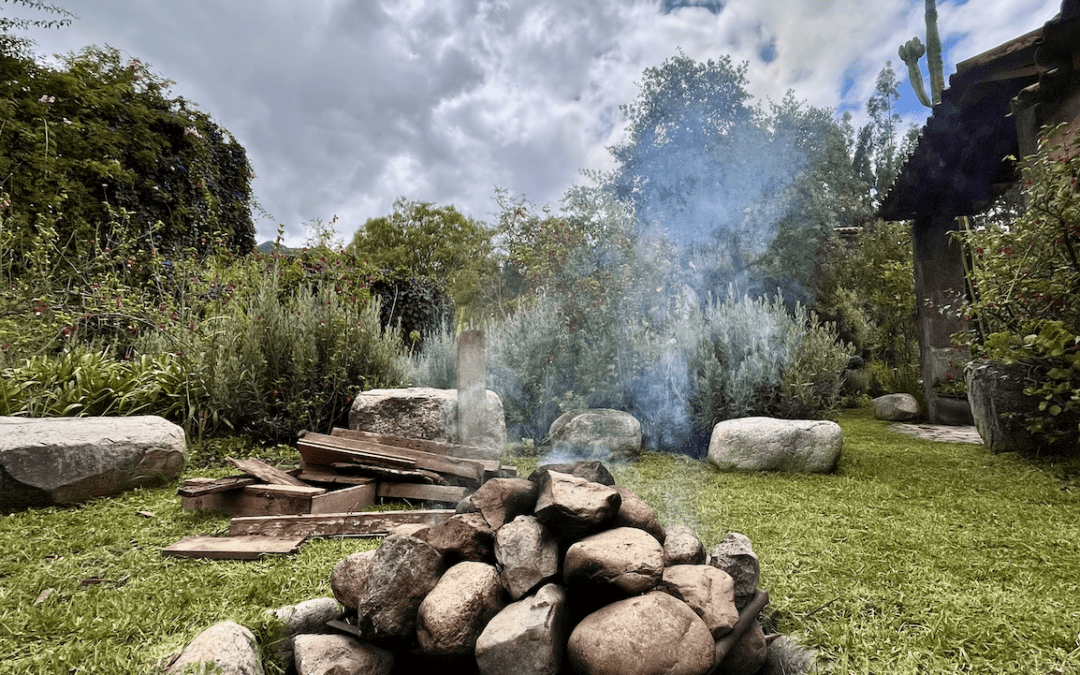
History of the Pachamanca
By: Lindsey Masterman (Willka T’ika intern)
A Pachamanca is an 8,000-year-old traditional Incan style of meal in which a variety of marinated meats, potatoes, vegetables, and herbs are roasted in an underground pit filled with hot volcanic stones. At Healing Gardens, we offer this vegetarian style without meat, or as we offer our staff in appreciation of their hard work, traditionally with meat.
Translating to “the earthen meal” or “the earthen cooking pot,” Pachamancas were traditionally created at harvest time as a way to worship and demonstrate gratitude towards Pachamama (Mother Earth) for her gift of a fruitful growing season. Today, Pachamancas are enjoyed as celebrations and a means of connecting with ancient Incan flavors, rituals and life. Experience the earth-given delicious, smoky richness of one of the most treasured cultural, social and culinary traditions of the Andes with your own Pachamanca celebration.
See a complete guide to making a Pachamanca below!
Directions
First, choose which foods you would like in your Pachamanca. Traditional ingredients vary by region, but meat (such as beef, alpaca, chicken, pork, lamb, and even guinea pig), potatoes, sweet potatoes, and fava beans are all staples. Other regions of Peru might add plantains, maize, cassava, or yukka to their Pachamanca.
Once you have your ingredients, it’s time to decide on a marinade. Again, the types of spices used in the marinade will depend on who you ask. To make our favorite marinade, blend chincho, huacatay, garlic, cumin, yellow ají peppers, a little white wine, and salt until the desired consistency is reached. Place your meats in a large container and rub them with the marinade. Save some marinade to be used the following day. Then, rub the meat with a liberal amount of additional salt. If you were to sprinkle the salt on first, it should look like the meat just came out of a light snowstorm. Leave to marinate overnight, flipping the meat over the morning of the Pachamanca.
Now it’s time to build your fire pit! You will need large rocks (preferably volcanic, or a type of rock that will not crack under pressure), a shovel, and a grate. First, dig a hole large enough to hold all the food you plan to cook, plus many large rocks. Build a fire in the pit, and place a grate on top of the fire. Place your rocks on top of the grate. Leave the rocks to be heated by the fire for 2-3 hours. Although it depends on the type of rocks you use, the rocks should be a darker color and smoking from heat when they are ready to be used.
While you wait, place your fava beans and maize in water to soak. Wash your potatoes and tubers, and then rub them with your saved marinade.
Once the rocks are hot enough, take them off the grate and pile them onto a heat-proof surface. Shovel all the coals and wood from the fire out of your pit to be recycled in the garden. Then, carefully arrange the hot rocks around the base of your pit, covering as much of the exposed earth as possible.
Now, time to add the food! First, nestle your potatoes and tubers into the hot rocks. Then, add your meat, skin side down, directly onto the rocks. Layer on your plantains and maize if using. Add more rocks to the pit as you layer on your food.
Once all your food except the fava beans is snuggled into your Pachamanca, pile many armfuls of herbs such as chincho, huacatay, and ruda (only a little!) onto the rocks. Then place your fava beans onto the herbs. Spread a tarp or damp cotton sheet over the herbs. Shovel dirt onto the edges of the sheet to seal it to the ground just outside of your pit. Then, shovel more dirt onto the center of the pit, covering the entire sheet with about 5 inches of dirt in order to create the proper pressure to facilitate cooking. To make an offering to Mother Earth, stick a stalk of Ruda into the pile, and pour out a little Chicha to give thanks to Pachamama. Wait for around an hour and a half for your feast to roast.
While you wait, you can make the sauces to go with your meal. Again, there are many sauces that pair well with a Pachamanca. Our favorite two are Huancaína and Rocoto salsa. To make Huancaína you will need oil, ~ 4 ají peppers, minced garlic, a chopped onion, salt, ~ 2 saltine crackers, ~ 1 cup of evaporated milk, and ~ 2 cups of grated cheese (the classic cheese in Peru is a semi-soft, rubbery cheese made from cow’s milk, similar to queso fresco). Remove the seeds and inside veins from your ají peppers and chop them into 1-inch pieces. Add your peppers and onion to a hot pan with oil, and sauté until your onions are translucent. Add the garlic and fry until fragrant, and then take the pan off the heat to cool. Once cooled, add the mixture to a blender with the evaporated milk and blend until smooth. Then, add the saltine crackers and cheese and blend again. Adjust the salt and other ingredients to taste, adding saltine crackers if the sauce is too thin, and milk if it is too thick. Listo!
Next, we will make the rocoto salsa. You will need ~4 seeded and veined rocoto peppers, one finely chopped onion, two lemons, and salt. Mix together your rocoto peppers and onion. Then, zest and juice your lemons into the mixture. Add salt to taste, and mix well.
In order to disassemble your Pachamanca, shovel some of the dirt off of your sheet and lift it enough to carefully pull out a fava bean. If the fava bean is soft and finished cooking, the rest of your Pachamanca should be too. Shovel the rest of the dirt off of the pit, and peel back the sheet, careful not to get the dirt in your Pachamanca. Place the fava beans into a bowl and set aside.
Take the herbs off the pit, and remove any rocks that are covering the food. Use tongs to take the food and place it into bowls, trying to keep the skin on the meat. Cut into each type of meat to test to see if it is finished. If they are undercooked, you can leave them directly on the hot rocks a little while longer, or quickly finish them off in a hot oven or stove. Better to “cheat” a little than eat raw meat!
Once you take all of your food out of the pit, you are ready to cut it up, get your sauces, serve, and dig in! We like to eat our Pachamancas family style and with a jug of Chicha, a fermented corn alcohol. However, there is certainly no wrong way to savor these delicious, plentiful celebrations! Enjoy!

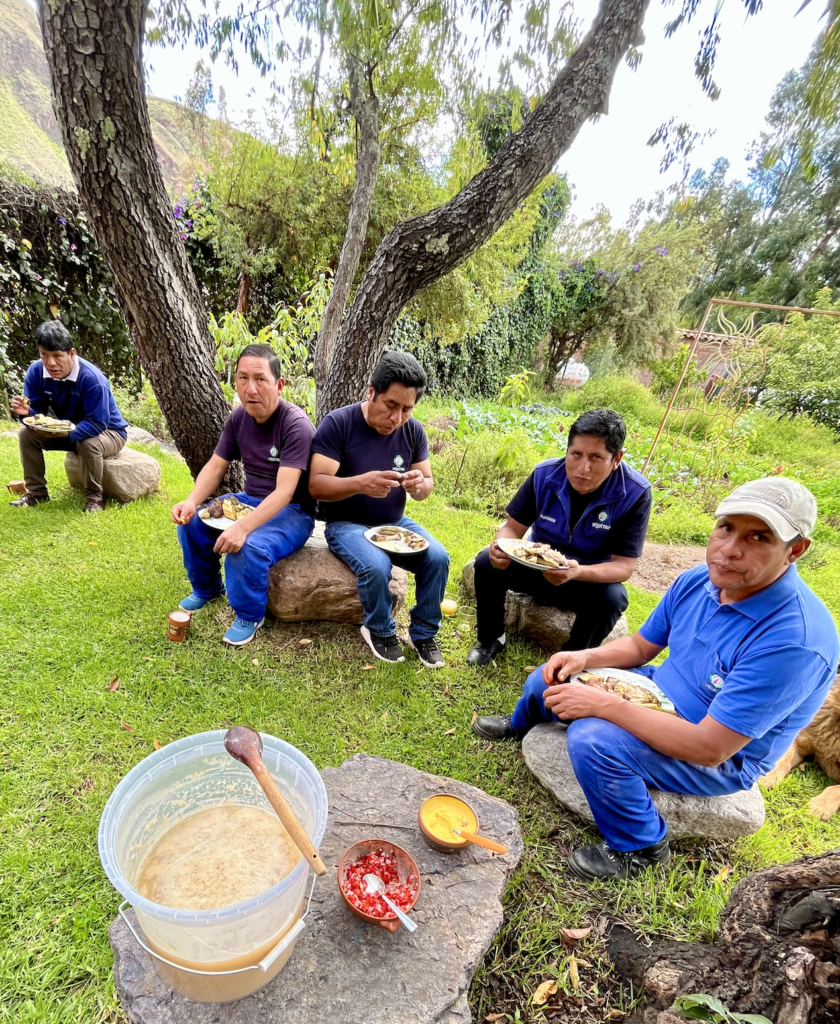
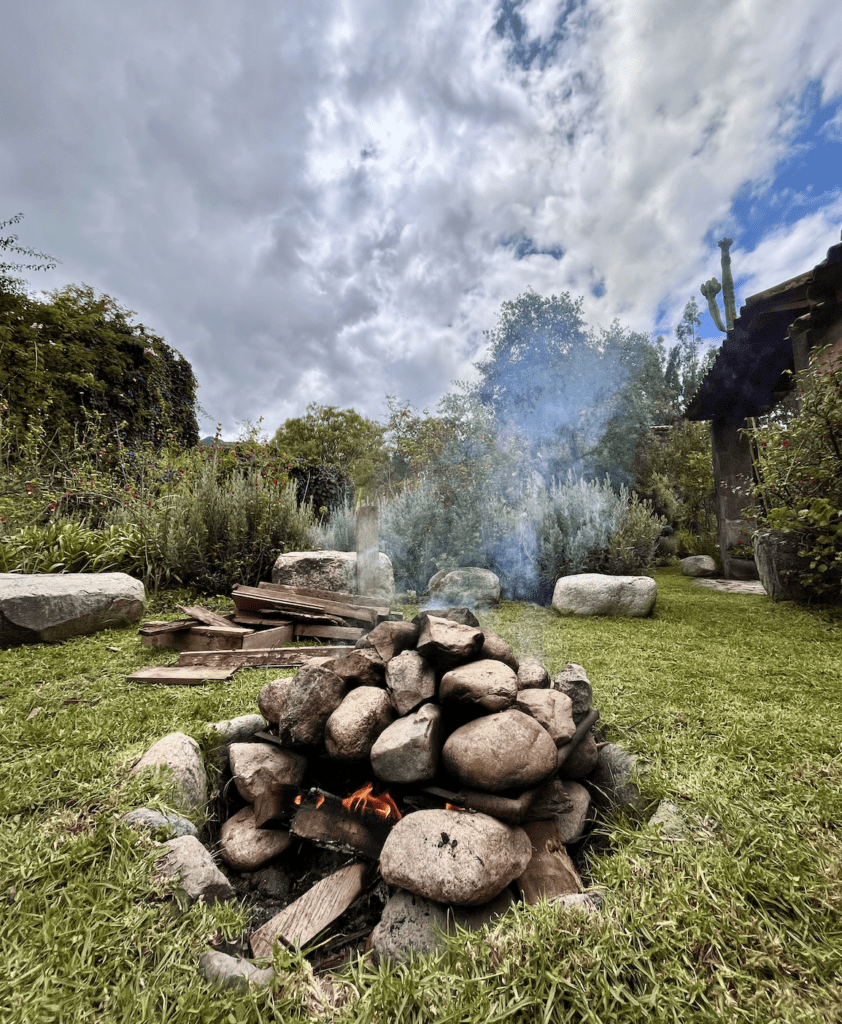
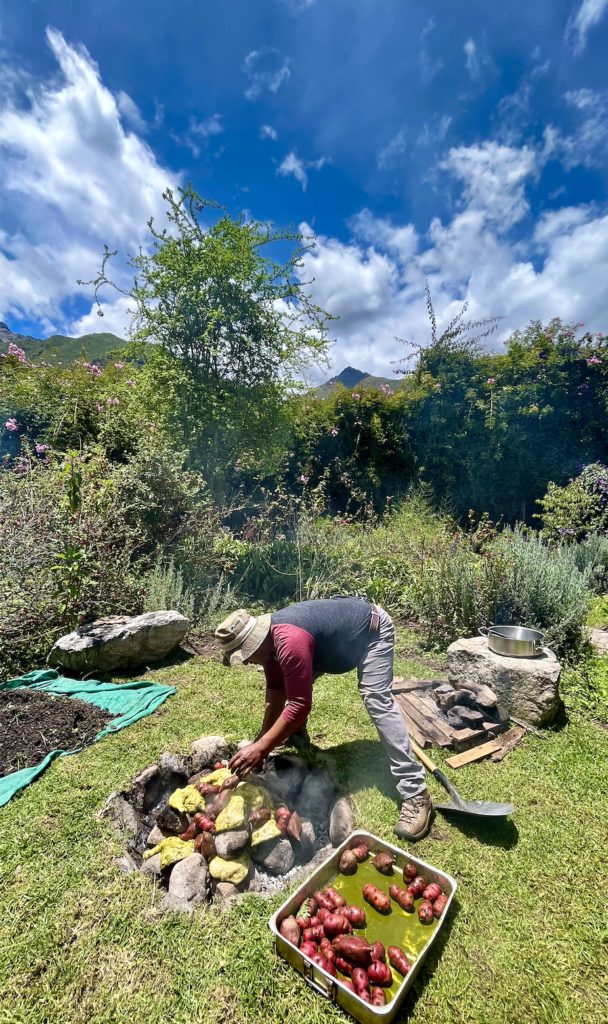
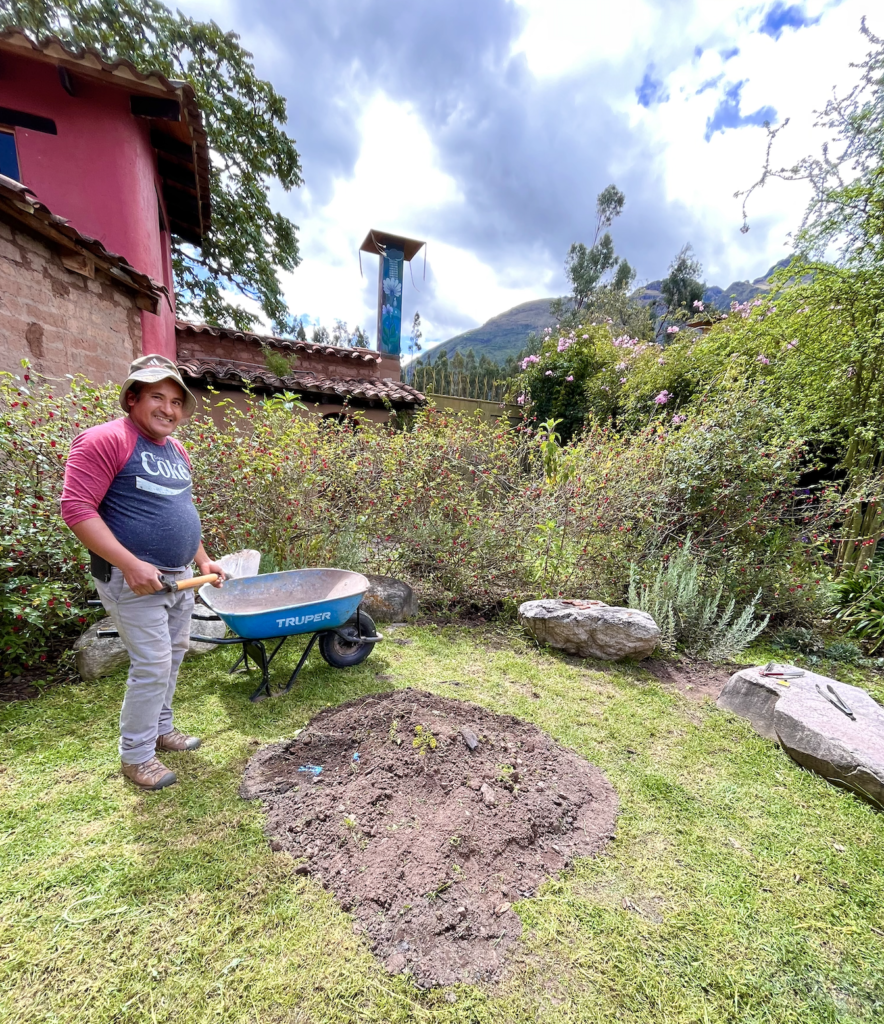
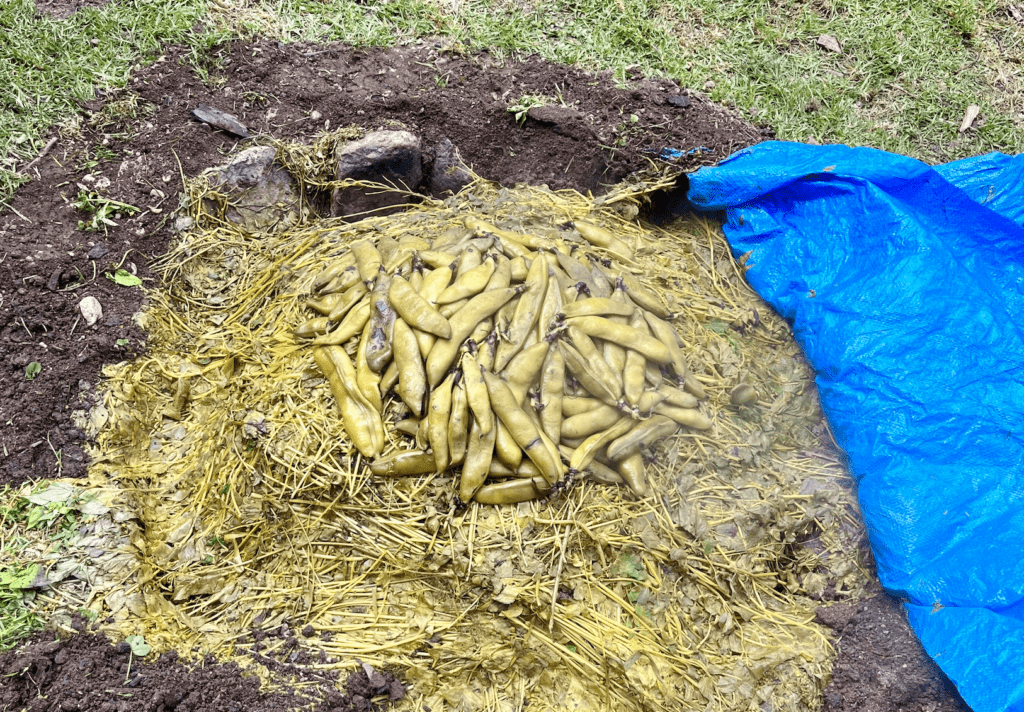


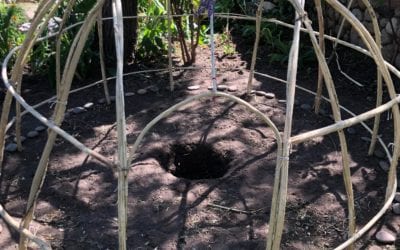
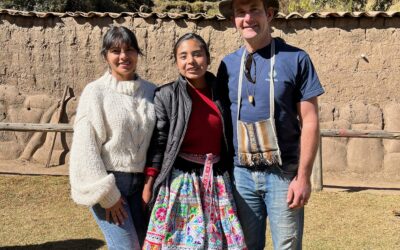
Recent Comments